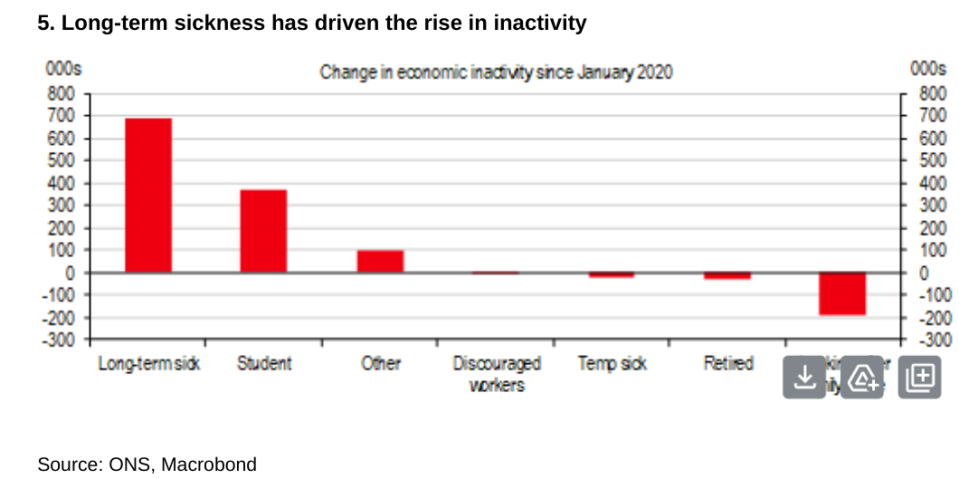UK inactivity rate rises as record number out of work due to long-term sickness

According to figures released this morning, 9.3m people aged between 16-64 were economically inactive in the final three months of last year, representing nearly 22 per cent of the population.
This was a 0.2 jump on the same period last year, largely due to an increase in long-term sickness. The figures showed that a record 2.8m people were inactive due to long-term sickness, up from 2.6m a year ago.
Rising inactivity due to ill-health has been a worrying trend in the UK over the past few years. The country is the only G7 nation where employment is still below pre-pandemic levels.
A number of think tanks and business groups have called for the government to do more to tackle this growing problem.

“This is holding back the economy, putting pressure on the public finances and the NHS, and limiting opportunities for too many people,” Hannah Slaughter, senior economist at the Resolution Foundation, said.
“Reversing this trend will be a priority for the current and next government,” she continued.
Christopher Rocks, lead economist for the Health Foundation, said that rising inactivity since 2020 has added £16bn to higher welfare spending and foregone tax receipts.
“The government must go further and faster to support people back into the workforce,” he said.
The government has already announced a series of measures to boost labour market participation, including expanding access to mental health schemes and imposing stricter penalties on those who do not actively search for work.
Jon Boys, senior labour market economist for the Chartered Institute of Procurement and Development, said the government needed to break down barriers for people working with health conditions in the Autumn Statement.
“It’s imperative to prioritise occupational health services, to prevent individuals from exiting the workforce prematurely,” Boys said.
Alexandra Hall-Chen, principal policy adviser for employment at the Institute of Directors, also called on the government to widen access to occupational health services.